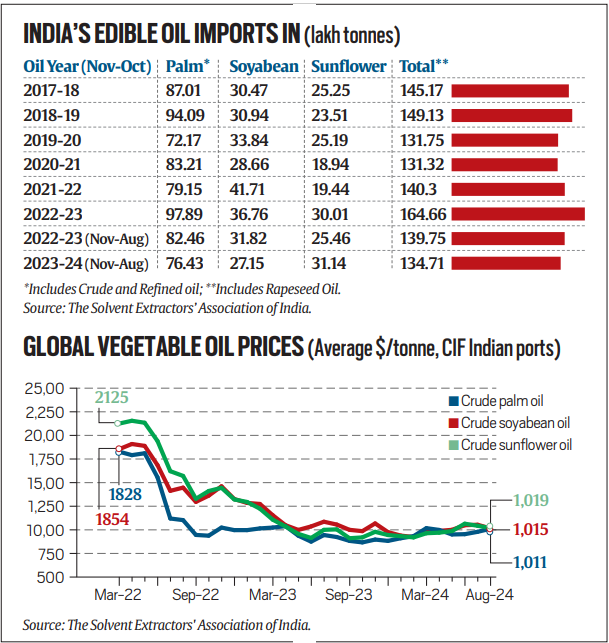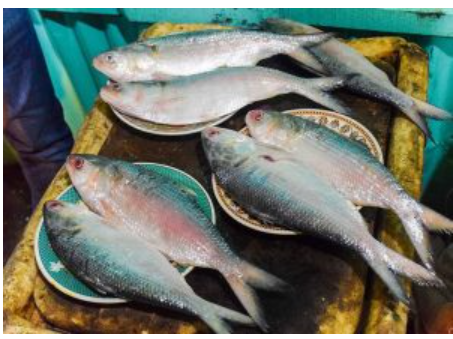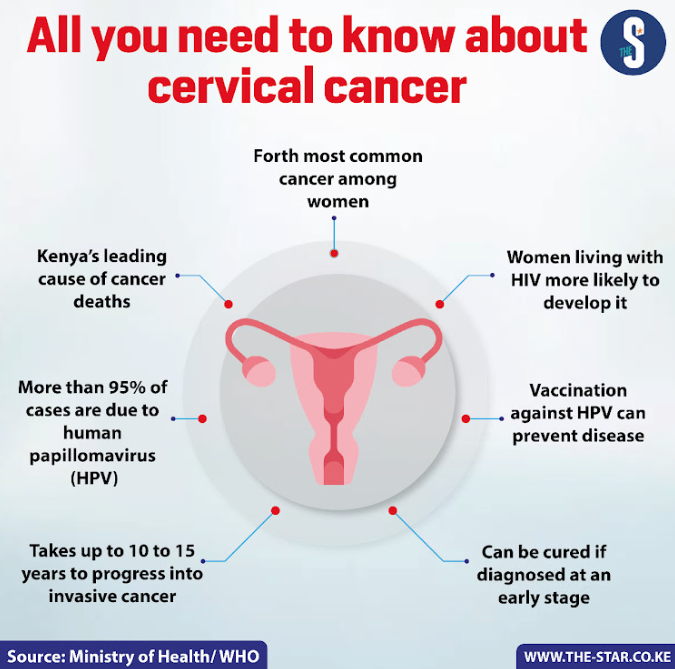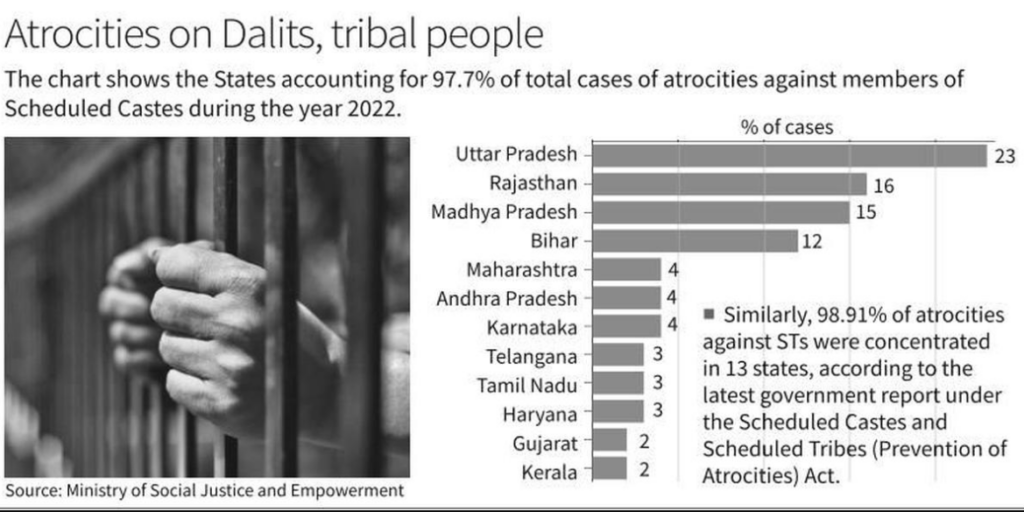23 September 2024 : Daily Current Affairs
1. Government Raises Import Duties to Protect Oilseed Farmers and Boost Domestic Production
- 1. Government Raises Import Duties to Protect Oilseed Farmers and Boost Domestic Production
- 2. Azerbaijan Proposes Voluntary Climate Fund Amid Stalled COP29 Finance Talks
- 3. Quad meet launches maritime and health initiatives
- 4. On the pitfalls of estimating GDP
- 5. Judicial appointments and disappointments
- Prelims Facts:
- 1. World Food India 2024 concludes today
- 2. Earth May Have Once Had Saturn-Like Rings, Contributing to Ancient Global Cooling
- 3. MMRDA Unveils ₹58,000-Crore Ring Road Plan to Decongest Mumbai and Cut Travel Time
- 4. Bangladesh Approves 3,000 Tonnes of Hilsa Exports to India for Durga Puja
- 5. India Pledges $7.5 Million to Combat Cervical Cancer in Indo-Pacific Region
- 6. India Signs Key Indo-Pacific Economic Framework Agreements on Clean and Fair Economy
- 7. ‘Assam records 86% drop in rhino poaching since 2016’
- 8. U.P., Rajasthan, M.P. top in cases of atrocities on Dalits: report
(Source: Indian Express; Section: Explained; Page: 13)
| Topic: GS3 – Indian Economy |
| Context: |
|
Analysis of News:

Import Duty Hike on Edible Oils
- On September 13, 2024, the government increased the Basic Customs Duty (BCD) on imported crude palm, soybean, and sunflower oils from zero to 20%, and on their refined versions from 12.5% to 32.5%.
- This led to an effective rise in import duties on crude oils from 5.5% to 27.5% and on refined oils from 13.75% to 35.75%, restoring the protection levels last seen in 2021.
- The duty hikes aim to protect domestic farmers by discouraging cheaper imports, which had surged due to previously low tariffs.
Pro-Producer Shift
- The decision to increase import duties, combined with the authorization for states to procure soybean at the Centre’s MSP, indicates a shift toward a more pro-producer tariff policy.
- Global vegetable oil prices have softened since their peak in 2022, creating room for the government to raise duties without significantly impacting consumers.
- This move also comes with political considerations, particularly with Maharashtra’s upcoming Assembly elections, as the state is a major soybean producer.
Surge in Sunflower Oil Imports
- Sunflower oil imports have surged, becoming the second-largest imported edible oil in India after palm oil. Crude sunflower oil imports reached 3.1 million tonnes by August 2024, driven largely by price competitiveness.
- While sunflower oil was once the most expensive, post-Ukraine war disruptions and subsequent price declines have made it more affordable compared to soybean and palm oils.
Domestic vs. Import Production
- India’s edible oil imports far exceed domestic production, with 16.5 million tonnes imported in 2022-23 compared to about 10.3 million tonnes produced locally.
- The hike in import duties is expected to slow down imports and boost domestic production, which could meet the incremental demand due to favorable monsoon conditions and government interventions.
Conclusion
- The government’s recent measures to raise import duties and authorize MSP procurement for oilseeds reflect a strategic shift to support domestic farmers.
- While these moves aim to boost domestic production and protect oilseed farmers, their long-term impact will depend on global price trends and domestic production capacities.
|
PYQ: Consider the following statements: (2018) The quantity of imported edible oils is more than the domestic production of edible oils in the last five years.The Government does not impose any customs duty on all the imported edible oils as a special case. Which of the statements given above is/are correct? (a) 1 only (b) 2 only (c) Both 1 and 2 (d) Neither 1 nor 2 Ans: (a) |
| Practice Question: Discuss the rationale behind the Indian government’s recent decision to increase import duties on crude and refined edible oils. How will this move impact domestic oilseed farmers and the edible oil market in India? (250 words/15 m) |
2. Azerbaijan Proposes Voluntary Climate Fund Amid Stalled COP29 Finance Talks
(Source: Indian Express; Section: Explained; Page: 13)
| Topic: GS3 – Environment |
| Context: |
|
Analysis of News:
Climate Finance Negotiations
- Ongoing Disagreements: Negotiations aim to replace the current $100 billion annual climate finance commitment with a more comprehensive agreement. However, developed and developing countries are at odds over key issues such as definitions of climate finance and funding allocation.
- Adaptation Neglect: Most climate finance is directed toward mitigation (emissions reduction), which has global benefits, whereas adaptation (local benefits) remains underfunded, receiving less than 20% of climate finance.
New Financial Goals
- Trillions Needed: The revised financial target, the New Cumulative Quantitative Goal (NCQG), could be between $1 trillion and $1.5 trillion annually. However, developed countries, which have struggled to meet the $100 billion target, are unlikely to agree to such large sums.
- Donor Base Expansion: There are calls to expand the donor base to include wealthier countries like China, South Korea, and Gulf nations. However, this demand is seen by some as an evasion of developed countries’ existing responsibilities.
Azerbaijan’s Proposed Fund
- Voluntary Contributions: Azerbaijan’s proposed fund would rely on voluntary donations from fossil-fuel producers. This raises doubts about its effectiveness, given the undercapitalization of existing funds such as the Loss and Damage Fund.
- Legacy Effort: Azerbaijan’s proposal is seen as a move to enhance the outcomes of COP29, though its impact on climate finance may be limited.
Conclusion
- Azerbaijan’s climate fund proposal adds a new dimension to the climate finance debate but is unlikely to significantly change the current financial landscape without binding commitments from developed nations.
| What are the Challenges Regarding Climate Finance? |
|
Insufficient Funds:
Lack of Ambition:
Ensuring Equity and Justice:
Private Finance:
Debt Burdens:
|
| PYQ: Describe the major outcomes of the 26th session of the Conference of the Parties (COP) to the United Nations Framework Convention on Climate Change (UNFCCC). What are the commitments made by India in this conference? (250 words/15m) (UPSC CSE (M) GS-3 2021) |
| Practice Question: Discuss the challenges faced by developing countries in accessing adequate climate finance and evaluate the potential impact of Azerbaijan’s proposal for a voluntary climate fund on addressing these challenges at COP29. (250 words/15 m) |
3. Quad meet launches maritime and health initiatives
(Source – The Hindu, International Edition – Page No. – 1)
| Topic: GS2 – International Relations – Regional and global groupings |
| Context |
|
Analysis of News:

What is Quad?
- The grouping of four democracies –India, Australia, US and Japan– is known as the quadrilateral security dialogue or quad.
- The aim of this grouping is to ensure a free and open international order based on the rule of law in the Indo- Pacific.
Objectives: The group’s primary objectives include
- maritime security,
- combating the Covid-19 crisis, especially vis-à-vis vaccine diplomacy,
- addressing the risks of climate change,
- creating an ecosystem for investment in the region and
- boosting technological innovation.
Initiatives from the Quad Summit
- New Coast Guard Exercise: The launch of the Quad-at-Sea Ship Observer Mission in 2025 aims to enhance interoperability and maritime safety among member nations.
- Maritime Initiative for Training in the Indo-Pacific (MAITRI): A training program to assist Quad partners in monitoring and securing their waters, with India set to host the inaugural workshop in 2025.
- Logistics Network Pilot Project: Quad countries will share airlift capacity to bolster disaster response efforts.
- Cervical Cancer Combat: The ‘Quad Cancer Moonshot’ initiative will involve a $10 million commitment from India for cervical cancer screening, with Serum Institute of India and Gavi providing up to 40 million vaccines for the region.
- Maritime Legal Dialogue: A dialogue has been initiated to support actions aimed at upholding the rules-based order in maritime issues.
- Condemnation of Maritime Aggression: The Quad leaders expressed strong concerns over maritime aggression in the East and South China Seas, highlighting issues of militarization and intimidation.
- Ukraine and Gaza Conflicts: The declaration touched on the global impact of the Ukraine war, particularly on food and energy security, and called for increased humanitarian aid to Gaza.
- Quad Fellowship Expansion: The fellowship for STEM education has been expanded to include 50 scholarships worth $500,000 for students from the region to pursue studies in government-funded technical institutions in India.
| Significance of Quad for India | ||
|
Countering China’s economic and military rise
For a free and open Indo-Pacific
India as a Net Security provider
Multipolar World
Post COVID Diplomacy
|
||
| PYQ: ‘Quadrilateral Security Dialogue (Quad)’ is transforming itself into a trade block from a military alliance, in present times – Discuss. (250 words/15m) (UPSC CSE (M) GS-2 2020) | ||
| Practice Question: Analyse the role of India in the Quad alliance in addressing maritime security challenges in the Indo-Pacific region. How can India’s participation enhance regional stability while balancing its relationships with other major powers? (250 Words /15 marks) | ||
4. On the pitfalls of estimating GDP
(Source – The Hindu, International Edition – Page No. – 10)
| Topic: GS3 – Indian Economy |
| Context |
| The article discusses the upcoming revision of India’s GDP series, proposing 2020-21 as the new base year while considering the use of GST data for estimating value addition.It highlights concerns about the integrity of GDP estimates and the need for validation of new datasets. |
Importance of GDP
- Gross Domestic Product (GDP) is a crucial measure of a country’s economic size and serves as a universal benchmark for comparing economic indicators across different regions.
- Real GDP, adjusted for price changes, is often preferred for accurate economic assessment. It is calculated based on datasets related to output, prices, and employment.
Base Year Revision
- The current GDP series, with a base year of 2011-12, is due for revision, proposing 2020-21 as the new base year.
- Major datasets for this revision are mostly available, except for Census data.
- The National Statistical Office (NSO) plans to use Goods and Services Tax (GST) data to estimate value addition, replacing the previous Ministry of Corporate Affairs’ (MCA-21) database for the Private Corporate Sector (PCS).
Rationale for the Change
- The MCA-21 database was introduced during the last revision for the 2011-12 base year, while the Annual Survey of Industries (ASI) was previously the main source for estimating manufacturing value-added.
- The switch to MCA-21 was justified by claims that it provided a more comprehensive view of value addition beyond factory premises, capturing the rapidly growing PCS better.
Defence of New Estimates
- The NSO defended its new estimates by claiming that they utilised a more extensive database and improved estimation methods that align with international best practices.
- Critics remained concerned about whether a larger dataset inherently leads to more accurate estimates, as the government did not make the MCA data available for independent verification.
Evidence of Overestimation
- Comparisons between Gross Value Added (GVA) and Gross Fixed Capital Formation (GFCF) based on the National Accounts Statistics (NAS) and ASI from 2012-13 to 2019-20 revealed significant discrepancies.
- The average annual growth rate of GVA was 6.2% per NAS but only 3.2% per ASI, indicating systematic overestimation in NAS estimates.
Caution for GST Data Utilisation
- The evidence highlights the need for caution in using GST data for GDP estimation.
- It serves as a warning against hastily applying unverified datasets and methodologies without rigorous testing.
- The NSO should conduct pilot studies to assess the GST dataset’s reliability for estimating value addition across various sectors and regions.
Conclusion and Recommendations
- While GST data has the potential to enhance GDP estimation due to its comprehensiveness, its lack of transparency poses challenges for validating GDP estimates.
- Systematic analysis and cross-validation by independent agencies are essential to establish the validity of GDP estimates based on GST data.
- Alternatively, the NSO may consider reverting to the ASI for estimating GDP in the manufacturing sector, as it is now more timely and available for use.
| PYQ: Explain the difference between computing methodology of India’s gross domestic product (GDP) before the year 2015 and after the year 2015. (150 words/10m) (UPSC CSE (M) GS-3 2021) |
| Practice Question: Discuss the implications of using GST data for revising India’s GDP estimates. What measures should be taken to ensure the accuracy and integrity of these economic assessments? (250 Words /15 marks) |
5. Judicial appointments and disappointments
(Source – The Hindu, International Edition – Page No. – 11)
| Topic: GS2 – Indian Polity – Judiciary |
| Context |
|
The Harmony of Constitutional Powers
- The Indian Constitution ensures a harmonious operation among the executive, legislative, and judicial branches.
- For the judiciary to function effectively, it must possess a high degree of independence.
- However, this independence must be tempered with constitutional discipline to prevent potential abuses of power.
Balancing Accountability and Independence
- Chief Justice S.H. Kapadia emphasised the need for the government to find a balance between judicial accountability and independence.
- The interplay among the three branches of government must align with constitutional principles to maintain judicial decorum.
Roles of the Three Instrumentalities
- The executive is responsible for implementing laws and policies, with the Cabinet led by the Prime Minister and Chief Minister serving as primary agencies.
- The legislature, consisting of Parliament and State assemblies, creates laws.
- The judiciary serves as the guardian of fundamental rights, correcting arbitrary actions by the executive and legislature.
Judicial Authority and Criticism
- Judges hold the ultimate authority in interpreting the Constitution and must possess knowledge of law and culture.
- The appointment of judges remains a concern; while the President appoints judges, this is done at the Cabinet’s direction.
- Clarity in the principles governing judicial selection is essential to prevent class bias and ensure that diverse voices are represented.
The Emergence of the Collegium System
- The collegium system for judicial selection was introduced by a narrow majority decision in the Supreme Court.
- This system operates without constitutional backing, leading to a lack of transparency and accountability in judicial appointments.
Need for Reform
- The Union Law Minister’s proposal to replace the collegium system with a commission has raised questions about its structure and accountability.
- A constitutional amendment is necessary to establish a clear framework for judicial selection.
Proposal for a Judicial Selection Commission
- A new commission must possess high standing, comparable to the Prime Minister or a Supreme Court judge, with the Chief Justice of India as its chairman.
- Investigations into the character and biases of judicial candidates should be conducted by an independent agency rather than government-affiliated police.
Ensuring Independence and Integrity
- The proposed commission should operate independently, upholding constitutional values and resisting external pressures from political entities and corporations.
- It should be immune from legal proceedings, with removal only possible through a high tribunal comprising the Chief Justice of India and all High Court Chief Justices.
Importance of Public Involvement
- The commission’s processes must allow for public input, ensuring transparency and accountability in judicial appointments.
- Such reforms aim to fortify the independence of the judiciary while ensuring it remains accountable to the public it serves.
| Practice Question: Critically evaluate the collegium system of judicial appointments in India. Discuss the proposed reforms and their implications for judicial independence and accountability. (150 Words /10 marks) |
Prelims Facts:
1. World Food India 2024 concludes today
(Source – https://pib.gov.in/PressReleseDetail.aspx?PRID=2057536 )
| Context |
|
More About World Food India 2024:
- World Food India 2024 was a significant food processing event held from September 19 to 22, 2024, at Bharat Mandapam, New Delhi, organized by the Ministry of Food Processing Industries.
- It featured 1,557 exhibitors, 20 country pavilions, and participation from 809 buyers from 108 countries, along with 2,390 foreign delegates.
- The event aimed to showcase advancements in the food processing industry and foster global collaboration.
Key Decisions Taken In The Event
- Key decisions included the inauguration of food processing units at 67 locations under PLISFPI and PMKSY schemes, with total investments of ₹5,135 crores.
- Credit-linked support was provided to 25,000 beneficiaries for micro projects worth ₹2,351 crores under the PMFME scheme.
- Discussions during the CEO Roundtable focused on easing business operations, addressing misleading advertisements, and evaluating the food processing value chain.
- The Startup Grand Challenge encouraged innovation in waste management and efficient water use, with winners receiving financial and incubation support.
- The Global Food Regulators Summit addressed regulatory issues, gathering delegates from over 70 countries.
- Overall, the event reinforced the government’s commitment to enhancing food security and sustainability in India’s food processing sector.
2. Earth May Have Once Had Saturn-Like Rings, Contributing to Ancient Global Cooling
(Source: Indian Express; Section: Explained; Page: 13)
| Context: |
|
Analysis of News:

Formation of Earth’s Ring
- Asteroid Impact: The ring likely formed when an asteroid passed too close to Earth and was torn apart by its gravitational forces, resulting in a debris field that orbited Earth’s equator.
- Debris Evolution: The pieces of asteroid debris gradually formed a ring similar to those around Jupiter, Saturn, Neptune, and Uranus.
Impact Craters as Evidence
- Crater Formation: Over time, the larger pieces of debris from the ring fell to Earth, creating impact craters near the equator.
- Crater Pattern: Monash scientists analyzed 21 crater sites dating between 488 million and 443 million years ago, all located close to the equator, indicating a potential relationship to the ring.
Climate Effects of the Ring
- Global Cooling: The ring could have acted as a parasol, shading Earth’s winter hemispheres and slightly increasing solar flux to the summer hemispheres. This effect may have contributed to global cooling.
- Historical Cooling: Earth experienced dramatic cooling between 460-465 million years ago, culminating in the Hirnantian Ice Age, the coldest period in the last half-billion years.
3. MMRDA Unveils ₹58,000-Crore Ring Road Plan to Decongest Mumbai and Cut Travel Time
(Source: Indian Express; Section: Cover Page; Page: 01)
| Context: |
|
Analysis of News:
Scope of the Project
- Road Network: The project will cover over 90 km, comprising roads, bridges, and tunnels. It aims to encircle Mumbai, providing seamless connectivity to suburban areas, Gujarat to the north, and Konkan and Western Maharashtra to the south.
- Collaborative Effort: MMRDA, along with BMC, MSRDC, and NHAI, will execute the plan.
Key Projects
- Toll Roads: Most new roads will be tolled, designed to divert heavy traffic away from the city’s core and improve travel times.
- Major Routes: The plan includes the Versova-Bandra Sea Link, Versova-Dahisar Link Road, and Alibaug-Virar Multi-Modal Corridor. These projects are crucial for east-west connectivity, traditionally overlooked in favor of north-south routes.
Infrastructure Vision
- “Mumbai in Minutes”: The initiative aims to reduce travel time across the city to under an hour, facilitating efficient movement for commuters and freight traffic alike.
- Economic and Urban Boost: With major developments like Navi Mumbai International Airport and Wadhwan Port, the new road network is critical to managing future traffic demands.
4. Bangladesh Approves 3,000 Tonnes of Hilsa Exports to India for Durga Puja
(Source: Indian Express; Section: Cover Page; Page: 01)
| Context: |
|
Analysis of News:

Hilsa Fish
IUCN status: Least Concerned
- The Hilsa is a species of fish related to the herring, in the family Clupeidae.
- It is a very popular and sought-after food fish in the Indian Subcontinent.
- It is the national fish of Bangladesh and state symbol in the Indian states of West Bengal and Tripura.
- The fish contributes about 12% of the total fish production and about 1.15% of GDP in Bangladesh.
What’s so special about Hilsa?
- Hilsa has a history of migrating to Allahabad in the Ganga river system from Bangladesh.
- Though it’s a saltwater fish, it migrates to sweet waters of the Ganges from the Bay of Bengal.
- It travels upstream of the river during the mating seasons and returns to its natural abode after spawning.
Import Trends and Volumes
- Indian Import Demand: India typically seeks to import 3,000 to 4,000 tonnes of Hilsa annually. However, actual imports have been lower, ranging between 1,200 and 1,300 tonnes.
- Shifting Import Sources: Hilsa imports from Bangladesh have decreased, while imports from Myanmar have risen. Last year, India imported 588.97 tonnes from Myanmar and 573.66 tonnes from Bangladesh. In 2022-23, Myanmar accounted for 149.23 tonnes, and Bangladesh for 1,309.46 tonnes.
5. India Pledges $7.5 Million to Combat Cervical Cancer in Indo-Pacific Region
(Source: Indian Express; Section: Govt & Politics; Page: 09)
| Context: |
|
Analysis of News:

What is Cervical Cancer?
- Cervical Cancer develops in a woman’s cervix. It is the 4th most common type of cancer among women, globally.
- Almost all cervical cancer cases (99%) are linked to infection with high-risk Human Papillomavirus (HPV), an extremely common virus transmitted through sexual contact.
Quad Partnership:
- The initiative was announced by Prime Minister Narendra Modi at the Cancer Moonshot event, hosted by US President Joe Biden during the Quad Summit.
- The project aims to improve affordable, accessible, and quality healthcare in the Indo-Pacific.
India’s Contributions to the Fight Against Cervical Cancer
- HPV Vaccine Development: India has developed its own HPV vaccine to prevent cervical cancer. The Serum Institute of India, in collaboration with Gavi, will provide up to 40 million doses for distribution across the region.
- Technical Support: India will offer technical assistance through its National Non-Communicable Disease Portal, which tracks long-term data on cancer screening and care.
6. India Signs Key Indo-Pacific Economic Framework Agreements on Clean and Fair Economy
(Source: Indian Express; Section: Economy; Page: 15)
| Context: |
|
Analysis of News:
What is IPEF?
The Indo-Pacific Economic Framework (IPEF) was launched jointly by the US and other partner countries of the Indo-Pacific region in 2022.
- The 14 IPEF partners represent 40 percent of the global GDP and 28 percent of global goods and services trade.
- It seeks to strengthen economic partnerships among participating countries with the objective of enhancing resilience, sustainability, inclusiveness, economic growth, fairness, and competitiveness in the region.
- The 14 members of the IPEF are as follows

Clean Economy Objectives
- Clean Energy & Climate Technologies: The clean economy agreement focuses on accelerating energy security, mitigating greenhouse gas emissions, and reducing reliance on fossil fuels. It also emphasizes technical cooperation among IPEF partners.
- Anti-Corruption and Tax Transparency: The fair economy agreement aims to promote a more transparent and predictable business environment, foster trade, and enhance cross-border investigations, asset recovery, and information sharing.
Financial Support for IPEF Initiatives
- Funding: The IPEF Catalytic Capital Fund, with an initial $33 million from Australia, Japan, Korea, and the US, aims to attract $3.3 billion in private investments. Additionally, $300 million has been allocated through the PGI Investment Accelerator.
Concerns Over Transparency and Standards
- Criticism: Experts from Global Trade Research Initiative (GTRI), raised concerns about the secrecy in negotiations and the potential risks for India. They cautioned against adopting international standards without sufficient preparation, which could hinder domestic flexibility for critical infrastructure projects.
7. ‘Assam records 86% drop in rhino poaching since 2016’
(Source – The Hindu, International Edition – Page No. – 6)
| Context |
| Recent report highlights significant progress in poaching prevention for the one-horned rhinoceros in Assam, emphasising efforts made since 2016.It underscores the government’s commitment to wildlife conservation, particularly in protecting the state’s iconic rhino population. |
Analysis of the news:
- Kaziranga National Park and other protected habitats for the one-horned rhinoceros in Assam reported an 86% decline in poaching since 2016.
- The Assam government announced this significant reduction on World Rhino Day.
- Between 2000 and 2021, poachers killed a total of 190 rhinos in the region.
- Kaziranga National Park hosts 233 anti-poaching camps, staffed by three to five personnel each, to protect the species.
| One-Horned Rhinoceros |
|
8. U.P., Rajasthan, M.P. top in cases of atrocities on Dalits: report
(Source – The Hindu, International Edition – Page No. – 4)
| Context |
|
Analysis of the news:

- In 2022, 97.7% of reported atrocities against Scheduled Castes (SCs) occurred in 13 states, with Uttar Pradesh accounting for 23.78% of the total cases.
- A total of 51,656 cases related to atrocities against SCs were registered under the Prevention of Atrocities Act.
- Madhya Pradesh recorded the highest number of atrocities against Scheduled Tribes (STs), with 30.61% of cases.
- The conviction rate for SC/ST cases declined to 32.4% in 2022.
- Special courts to expedite trials exist in only 194 out of 498 districts.
- Several states have established SC/ST protection cells and special police stations to address complaints related to atrocities against these communities.



